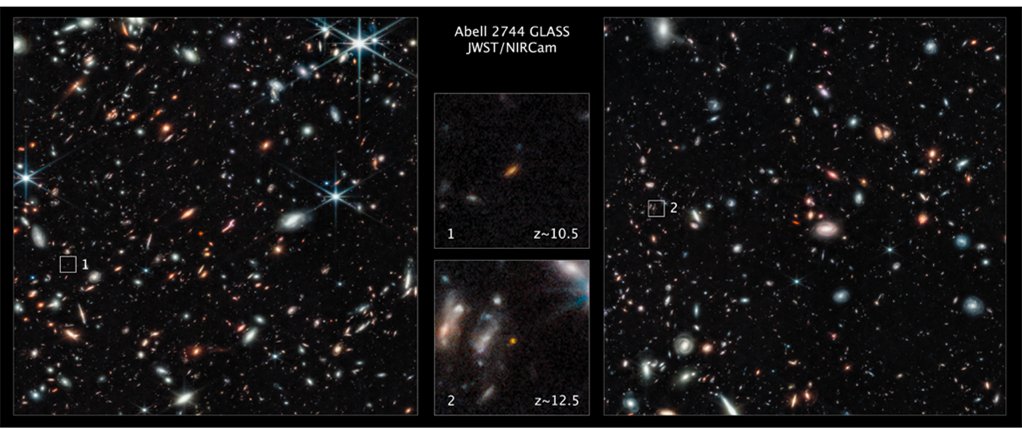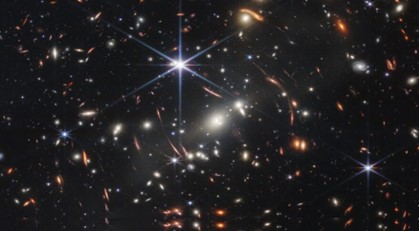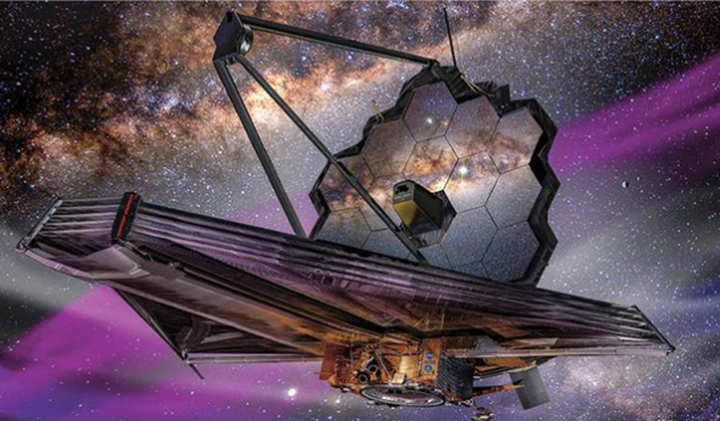
June 7, 2023 –Astrophysicists from the Hebrew University of Jerusalem (HU) published a new theoretical model in the peer-reviewed journal, Monthly Notices of the Royal Astronomical Society, that solves the mystery of the formation of massive galaxies in the early universe.
Using the James Webb Space Telescope (JWST), the findings explain recent observations which revealed a surprising excess of massive galaxies in the universe in the first half billion years after the Big Bang, which contradicts currently commonly accepted theory. Each galaxy contains approximately one billion stars.
Prof. Avishai Dekel led the research team from the Hebrew University Racah Institute of Physics which included Dr. Kartick Sarkar, Professor Yuval Birnboim, Dr. Nir Mandelker, and Dr. Zhaozhou Li.
“In the early stages of the universe, the star-forming clouds were denser, enabling a rapid collapse of gas within them and its transformation into stars in less than a million years, within the window of opportunity,” said Dekel. “This naturally resulted in the high efficiency of star formation from the gas without disruption from explosions or winds from older stars.”

According to the prevailing theory of galaxy formation, gravity causes gas scattered in the universe to collapse into the centers of giant spherical clouds of dark matter, where it becomes luminous stars. However, theory and observations to date have shown that the efficiency of star formation in galaxies is low, with only about 10% of the gas that falls into the clouds becoming stars. The inefficiency is caused by remaining gas heating up or being blown out of galaxies under the influence of winds and supernova explosions from the stars that manage to form first. This contradicts recent JWST indications of vast amounts of stars created in a short time frame.
The researchers call this phenomenon “feedback-free starburst” (FFB), which naturally explains the mystery. Under the unique conditions prevalent in early galaxies, gas efficiently turns into stars without being disrupted by feedback processes. This process of high-efficiency star formation in the absence of feedback explains the observed excess of massive galaxies.

“The publication of this research marks an important step forward in our understanding of the formation of primordial massive galaxies in the universe and will no doubt spark further research and discovery,” says Dekel. “The predictions of this model will be tested using the accumulating new observations from the Web Space Telescope, where it seems that some of these predictions are already confirmed.”
Dekel adds that important implications of the proposed FFB scenario will be investigated in future studies. These include the efficient formation of seed black holes of a thousand solar masses in the centers of the FFB star-forming clusters, which are a key to explaining the surprisingly super-massive black holes of one billion solar masses seen in centers of galaxies half a billion years later.




